Everyone’s heard about Tokyo and Kyoto, but how many people have ventured into Japan’s secret finds? We’re sure this ultimate guide for visiting Chugoku will have you falling head over heels for this awesome region of western Japan that few travelers ever visit.
This article may contain paid links where we make a small commission for purchases you make from links that you click from this article. By purchasing through our links, you support us at no additional cost. Thank you for your support ❤️. For more details, read the disclosure page.
Get ready to dive into the past at Okayama Castle, cruise around the rugged Uradome Coast, and visit floating island temples! Each of the region’s five prefectures has something worth seeing, so we’ve created a handy guide with all the coolest attractions and epic travel tips.
From breathtaking stretches of coastline to sleepy onsen towns, there’s so much to do in Chugoku you won’t want to go home.
What You’ll Get Out Of This Article
This epic guide has everything you need to know about the Chugoku area to make your trip plain sailing. It includes:
- Must-see destinations across Chugoku, including Hiroshima, Tottori Sand Dunes, Miyajima Ropeway, and iconic gardens like Shukkeien and Korakuen.
- Epic historical spots such as Iwami Ginzan Silver Mine and Okayama Castle.
- Practical tips on the best time to visit and how to get around.
- Recommended hotels near the top attractions.
- Handy packing checklist and answers to common travel questions.
- Links to related guides + travel mistakes we made (so you don’t have to!)
Chugoku Region Travel Guide

If you’ve been wondering about planning a trip to Chugoku then this is the perfect guide for you. Here’s a quick overview of some practical things before we get into it.
TOP TIPS FOR TRAVELING TO CHUGOKU
- Where to stay – The luxurious Kikunoya Hotel on Miyajima Island has spacious rooms with breathtaking views that make it our top stay in Chugoku. We use Booking.com for all of our stays and use the Genius discount to get great deals on our hotel bookings. Alternatively, you can always see if hotel corporate codes might work for you.
- Must pack item – Make sure you bring a two-pronged Type A adapter for Japan. It’s no fun realizing you don’t have any of the right cables at the start of a trip.
- Recommended tour – Hiroshima and Miyajima Island are the main reasons that travelers come to the Chugoku region, so if you’re tight on time and you’re worried you won’t get to see everything, book this Hiroshima and Miyajima day trip tour! You’ll get to see all the coolest attractions and leave the planning and logistics to someone else.
- Car rentals – You can get around Chugoku using public transport, but having a rental car always makes life easier and allows you to travel at your own pace. Make sure you know about ways to save money with car rental coupon codes and always start your search with Discover Cars and RentalCars so you know what the best deals are.
- Flights – If you are flying in from elsewhere, use the Skyscanner “Everywhere” feature to find the best deals from your local airport. Check how much it would be for you to get to Hiroshima Airport!
- Insurance – Not always required but always recommended! Make sure you’re covered with the best travel insurance. Our go-to is always HeyMondo for good all-around coverage at reasonable prices, also if you use our link, you automatically get 5% discount.
- Hottest deals – Never be without our frequently updated travel deals page.
Let’s dive right in and find out what makes this region of Japan so unique.
Why Chugoku Is Worth Visiting

Chugoku is a region of Japan that is often overlooked. But we think that the region’s tranquil gardens that will get your inner Zen overflowing, peaceful hot-spring towns, epic landscapes, and ancient shrines are well worth traveling for.
It’s also a great gateway to the Shikoku region, the smallest of Japan’s four main islands, which is just across the Seto Inland Sea from Chugoku.
You could even combine a trip to the area and use our 12-Day Shikoku Itinerary – Ultimate Road Trip Guide To Traveling Japan’s Hidden Gem as inspiration.
Notable Hotels In Chugoku
Here are our top hotel picks across Chugoku. These hand-selected stays range from modern city hotels to charming ryokans close to the region’s must-see sights.
APARTMENT

Grand Base Hiroshima Peace Hotel
This lovely hotel rents out hotel apartment units that are a 7-minute walk from the Hiroshima Peace Memorial Park. On top of the super handy location, each apartment has a spacious kitchen, so you can save some money and cook a few of your own meals if you’re on a budget trip!
MID-RANGE

Kikunoya Hotel
This lavish hotel on Miyajima Island is a great pick for couples looking for a romantic getaway or families who are struggling to find rooms with enough beds for everyone! The rooms are super spacious (which is rare in Japan), and the views from our bedroom window were amazing.
BUDGET

Drop Inn Tottori
Finding backpacker-friendly places to stay isn’t always easy in Japan, so we were super chuffed when we found this hostel in Tottori. It’s modern and clean, with loads of dorm options (including female-only rooms). The best part is it’s only a 3-minute walk from the Tottori Bus Terminal, and from there you can get public transport to the Tottori Sand Dunes.
MID-RANGE

Ryori Ryokan Tsurugata
We couldn’t believe it when we found this adorable traditional ryokan in the heart of the Kurashiki Bikan Historical Quarter. The building itself dates back to the Edo Period, so you really are surrounded by history! The best part? There are public baths you can unwind in after a long day of sightseeing.
Top Things To See In Chugoku

There are loads of things to do and see in Chugoku, so we’ve broken this section up to make it a bit easier to follow.
After traveling the region, we found that each of the area’s five prefectures had a distinct personality and unique set of attractions – so we decided to break this list up into different prefectures.
From the Hiroshima Memorial Park where we learned all about the history of the atomic bomb to the immense Tottori Sand Dunes, Chugoku is a multi-faceted region that has loads of adventures in store!
Hiroshima Prefecture
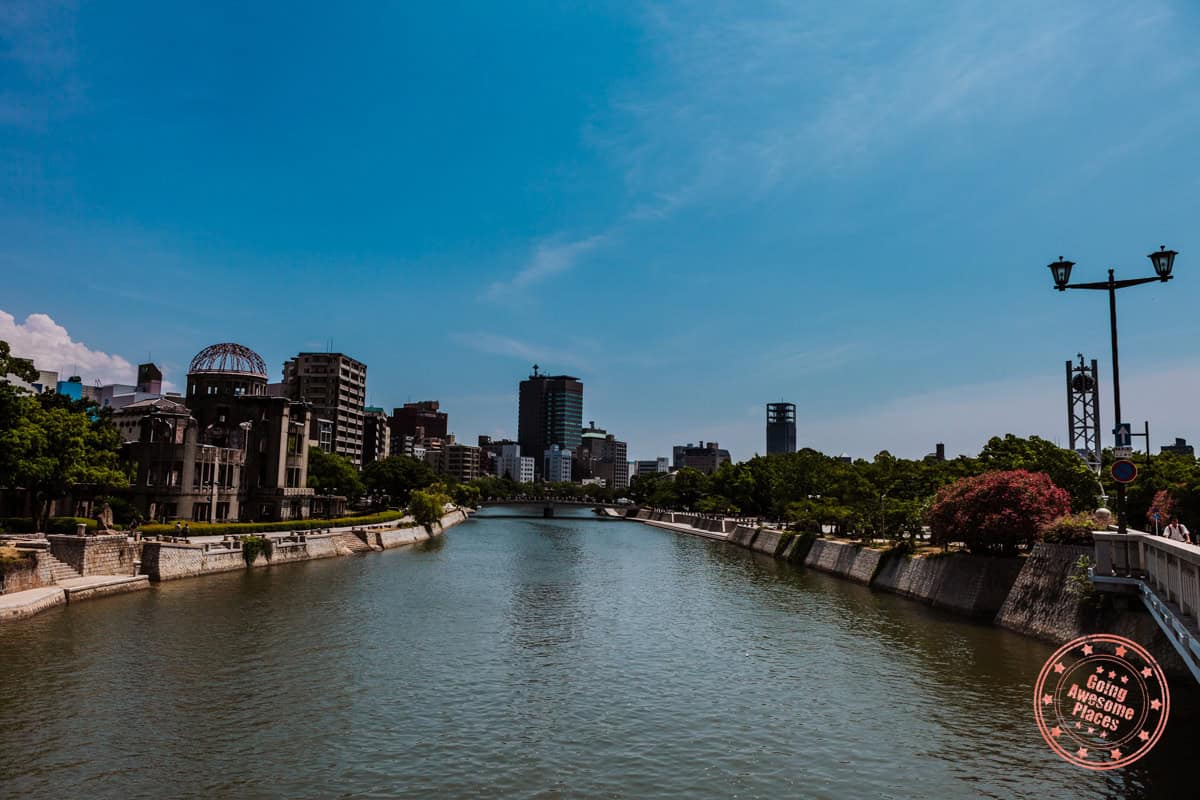
Hiroshima is without a doubt Chugoku’s most famous prefecture. It’s where the region’s capital Hiroshima is, which is famously the first city that a US atomic bomb was dropped on in 1945. It’s thought that between 90,000 and 166,000 people were killed by the bomb, and the impact of radiation is still being felt by survivors today.
Miyajima is a little island off the shores of Hiroshima that is dotted with famous temples and has a cool ropeway that takes you to the top of Mount Misen.
So, what are you waiting for? Let’s dive right in!
PLAN A TRIP TO HIROSHIMA AND MIYAJIMA
Check out our 3-day itinerary to Hiroshima and Miyajima!
The Ultimate 3-Day Hiroshima And Miyajima Island ItineraryVisit The Orizuru Tower In Hiroshima
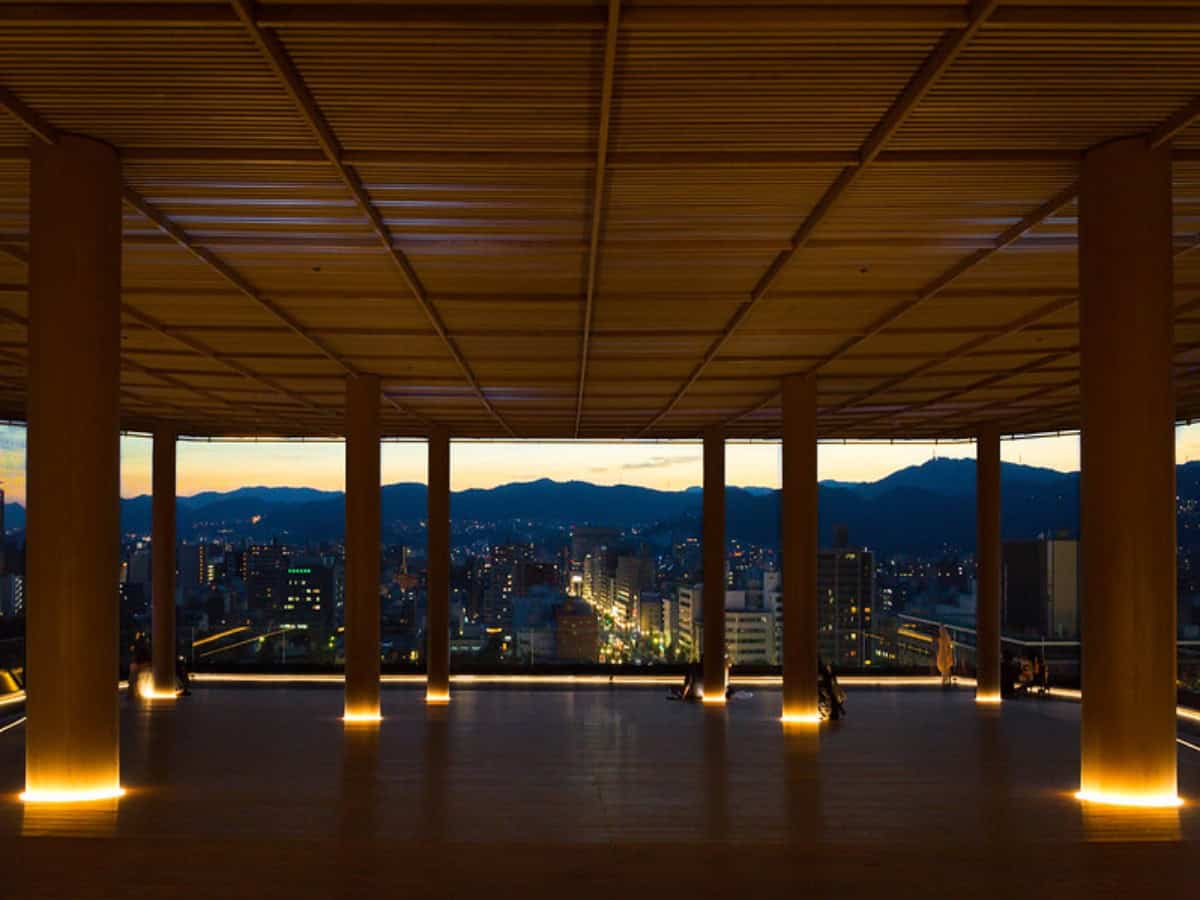 Image via Flickr by Sam García
Image via Flickr by Sam GarcíaEnter the Orizuru Tower building and follow the spiral stairs up to the observation deck on the top floor, which is the real reason we’ve brought you here.
This iconic tower is close to the Atomic Bomb Dome, so it’s a popular viewpoint if you want to check the dome out from above. There are stunning views down the length of the river and of the surrounding mountains too.
Bring a jumper along, it’s an open-air observation deck with nothing but a roof so you’ll be exposed to the elements.
Once you’ve soaked in the views, head to the interactive multimedia zone on the floor below where you can watch a time-lapse of Hiroshima since the atomic bomb until now.
It’s also where you can buy origami paper. They’ll teach you to fold it into orizuru, or paper cranes. It’s traditional to make one and then drop it into the tower’s glass-paneled outer wall. Over time, the wall will slowly fill with paper cranes!
Plan ahead and get your admission ticket to the Orizuru Tower observation deck and multimedia floor ahead of time here!
Learn About The Impact Of The A-bomb At The Hiroshima Peace Memorial Museum
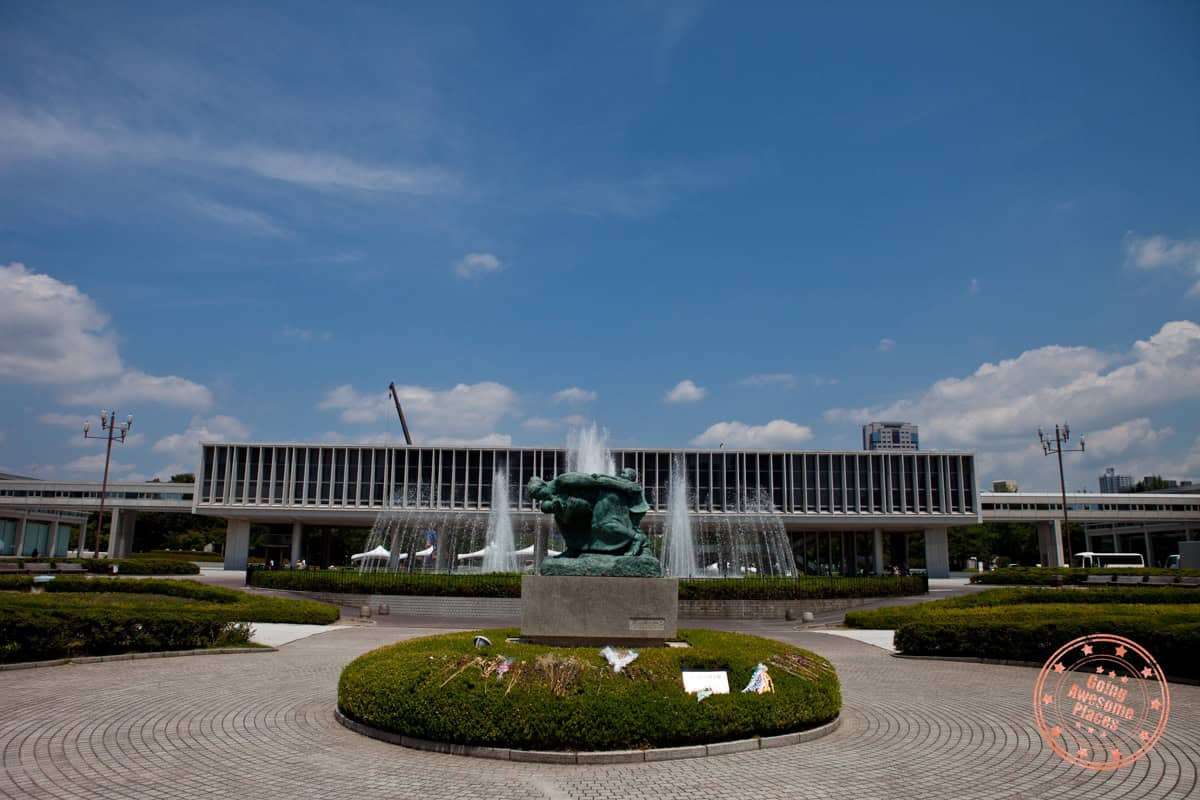
When the US dropped an atomic bomb on Hiroshima in 1945, it completely devastated the heart of the city. From the rubble and ruins, the Hiroshima Peace Memorial Park was born, which is where the museum is.
One of the absolute must-sees in the park is the Hiroshima Peace Memorial Museum. There are lots of artifacts that belonged to atomic bomb victims on display, as well as testimonies of those who were affected by the bomb.
It’s not an easy visit, and we found it pretty heart-wrenching. But it’s important to visit places like this so we can remember those who were lost and make sure we don’t let history repeat itself.
We were particularly struck by the story of Sadako Sasaki, a radiation victim who was just 2 when the atomic bomb hit the city. She died at 12 years old of leukemia as a result. There is a collection of paper cranes that she folded, which is why the paper crane is such an important symbol in Hiroshima.
If you have already decided you’ll be adding the museum to your itinerary, you can book your admission ticket in advance here.
Check Out The Hiroshima National Peace Memorial Hall
 Fitting name for a beautiful memorial hall for the victims of the A-Bomb. So much symbolism here.
Fitting name for a beautiful memorial hall for the victims of the A-Bomb. So much symbolism here.There are lots of things to see sprinkled around the Hiroshima Memorial Park, like the Prayer Fountain, the A-bomb Ruins Exhibition, and the A-bombed Phoenix Trees. But if you’re short on time, we recommend prioritizing the Hiroshima National Peace Memorial Hall.
Inside, you’ll find a collection of 140,000 tiles in the Hall of Remembrance that represent each of the lives that were lost. It was super impactful standing there and seeing the sheer number of people who tragically died because of the bomb.
There was also a 360-degree panoramic view of what the city looked like after the bomb, taken from the epicenter (the point where the A-bomb landed) at Shima Hospital.
If you’re intrigued about the stories of Japan’s hibakushas, the name given to bomb survivors and those affected by the exposure to radiation, you can read about them in the library in the memorial hall.
Marvel At Hiroshima’s Flame Of Peace
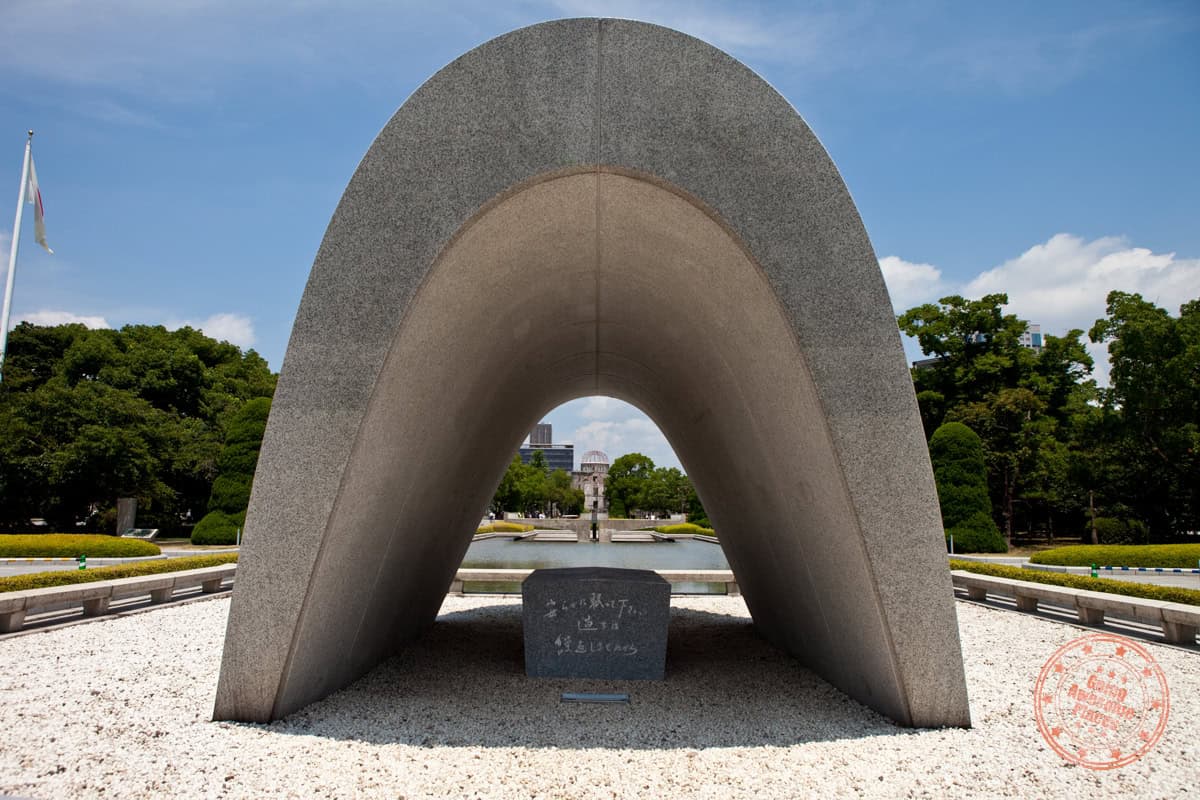
The Flame of Peace has become an iconic symbol of Hiroshima, and for good reason! The flame sits at the end of the long Pond of Peace in the Hiroshima Peace Memorial Park and was lit on August 1st, 1964.
It’s been burning ever since and represents Japan’s anti-nuclear stance. The plan is that the flame won’t be put out until all nuclear weapons are forbidden around the world and global peace is a reality, not just a dream.
Did you know the flame has been used to light the Olympic Flame? It was a pretty epic moment when it brought the Asian Games flame to life back in 1994.
The sculpture surrounding the flame is also very symbolic. Shaped like two upward-pointing hands, it represents the plea for water of A-bomb victims who were thirsty and tired after enduring the heat and blazing fires.
Check Out The Atomic Bomb Dome
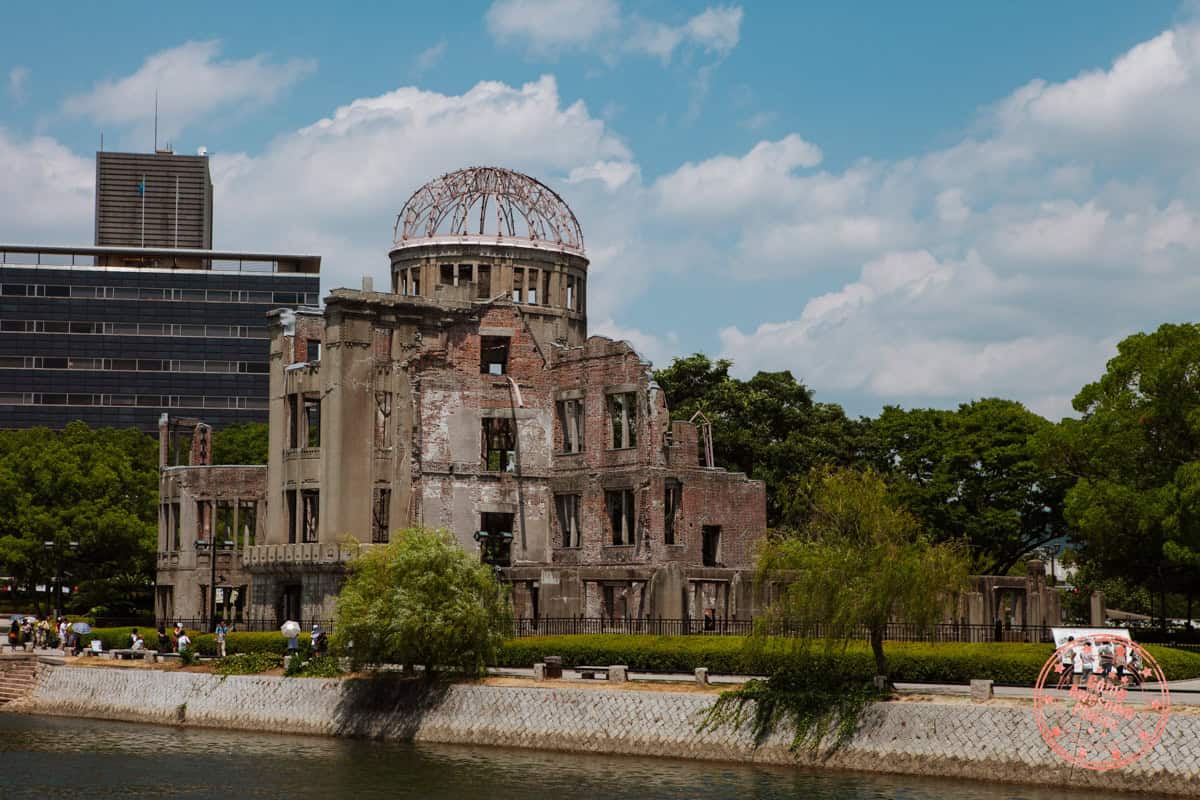
When the clouds of smoke cleared, the only building left standing after the A-bomb had flattened the center of Hiroshima was what is now known as the Atomic Bomb Dome. Although in ruins, a significant amount of the building’s structure had managed to survive the explosion.
The ruins were purposefully left exactly as they were after the bomb, and today it’s an eerie reminder of just how much the bomb shaped the city. Sadly, everyone who was inside the building died when the A-bomb hit Hiroshima.
Originally an exposition and trade center, the most notable feature of the building is the crumbled and exposed steel dome. It’s such a significant landmark, it is now a UNESCO World Heritage Site, and it made it onto our Top 5 Things To Do In Hiroshima guide.
You can learn more about the history of the atomic bomb and how it affected the Hiroshima with this 4-hour-long tour of the city with a licensed tour guide.
Immerse Yourself In Tradition At Hiroshima Castle
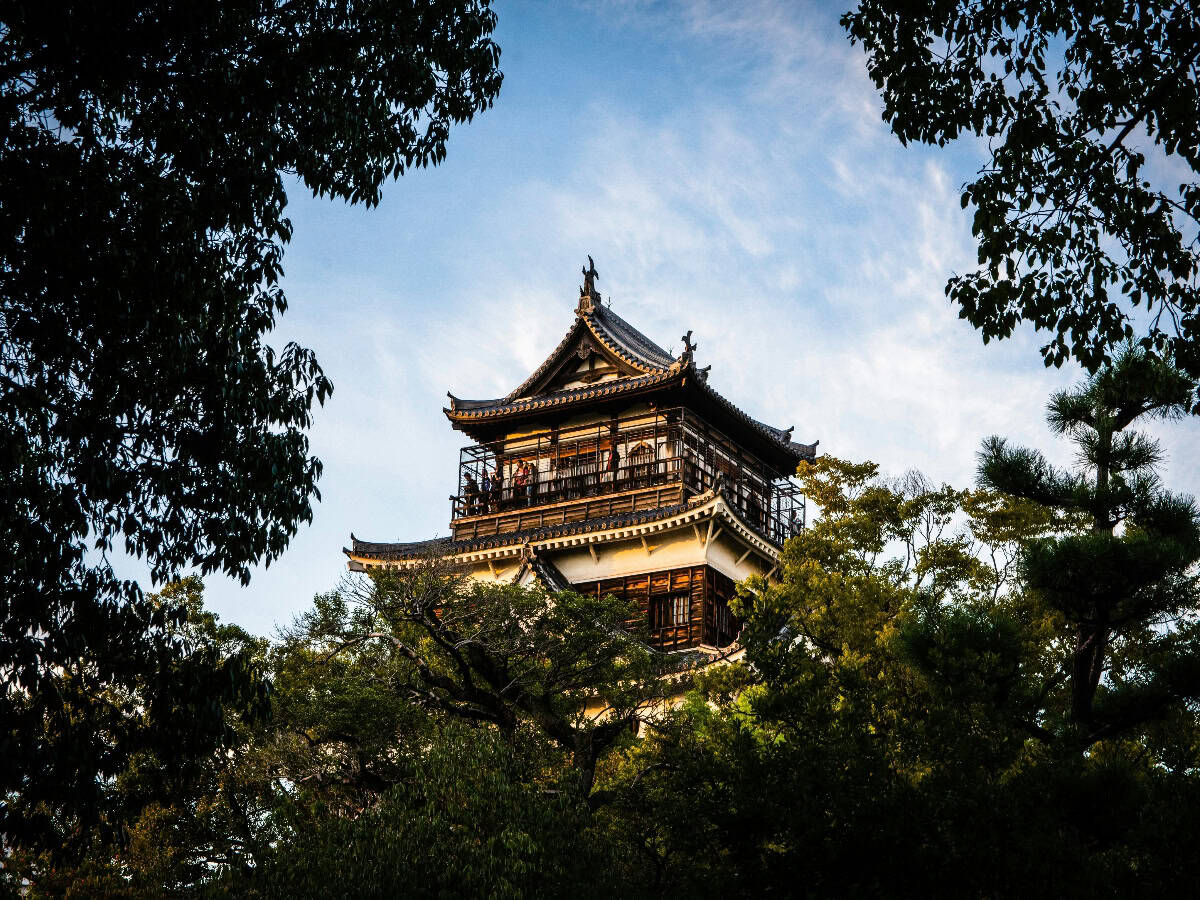 Image via Unsplash by Nicholas Doherty
Image via Unsplash by Nicholas DohertyHiroshima Castle, or the Carp Castle as locals call it, is a stunning traditional Japanese castle that looks more like a temple from the outside.
Before the atomic bomb, the castle was one of the few to survive the Meiji Period, when all but 12 castles were destroyed because they were seen as a symbol of the old feudal system.
But sadly, the original castle was destroyed by the atomic bomb. What you see today is a reconstruction, but it’s still worth visiting. There’s a moat, a shrine, and even some of the old castle ruins within the complex.
Consider yourself a history nerd? Then check out the little castle museum where you can learn more about the castle’s history and see photos of the original structure. Or join guided tour of Hiroshima Castle!
Chill And Catch Your Breath At The Shukkeien Garden
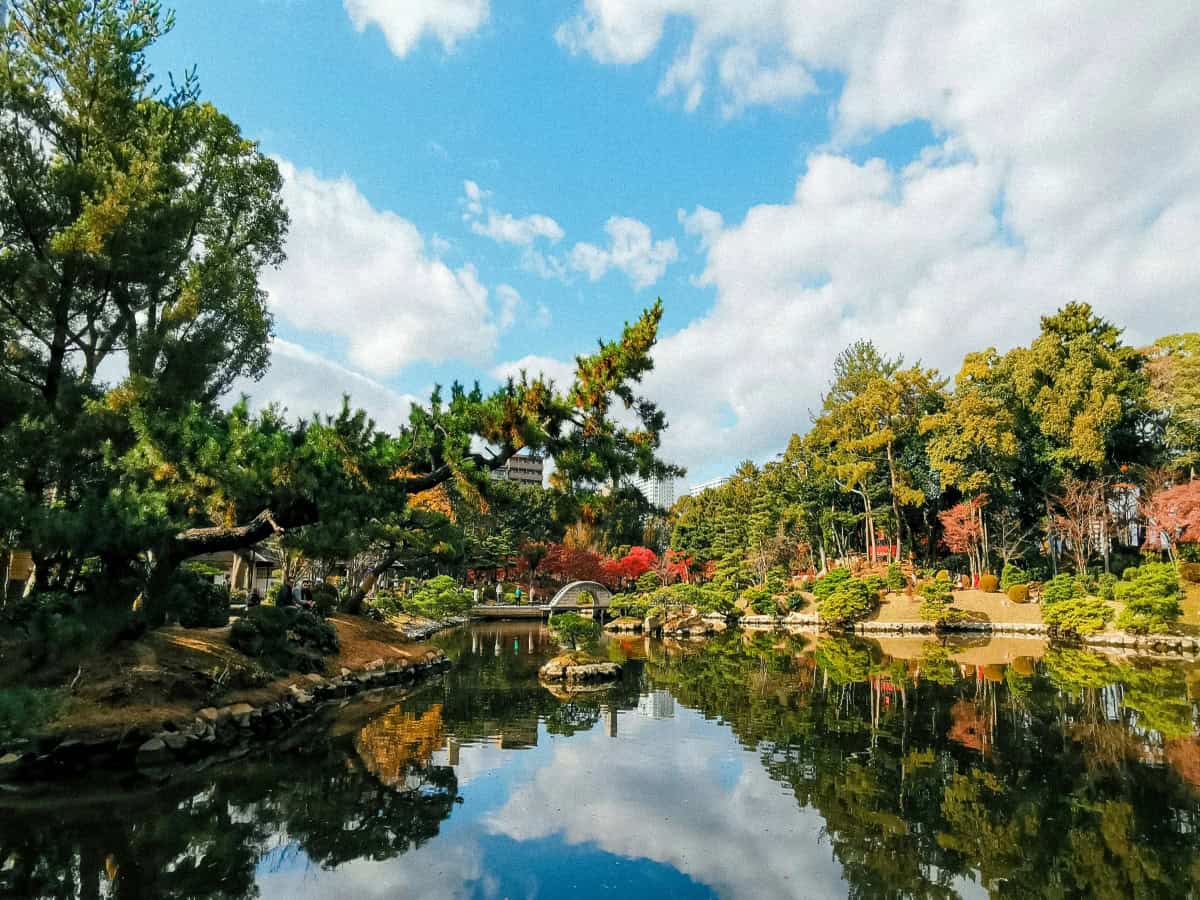 Image via Unsplash by Ponglada Niyompong
Image via Unsplash by Ponglada NiyompongMost of the things to do in Hiroshima are atomic bomb related, so it can get a little heavy. If you need a moment to gather your thoughts and catch your breath, then head to the gorgeous Shukkeien. We love how the garden’s name translates to ‘the shrunken-scenery garden’, which perfectly captures this little gem.
The garden was cleverly designed to look like miniature mountains, valleys, and forests using raised patches of land and subtle landscaping techniques. Honestly, we felt like we’d stepped out of the city and into Japan’s countryside.
What’s incredible is that the garden has been in Hiroshima since 1620, so what you see today has been perfected over hundreds of years.
If you follow the little path through the miniature landscapes you’ll come across lots of traditional tea houses, so make sure you stop for a rejuvenating cup of matcha tea in one of them!
Visit Miyajima Shrine On Miyajima Island
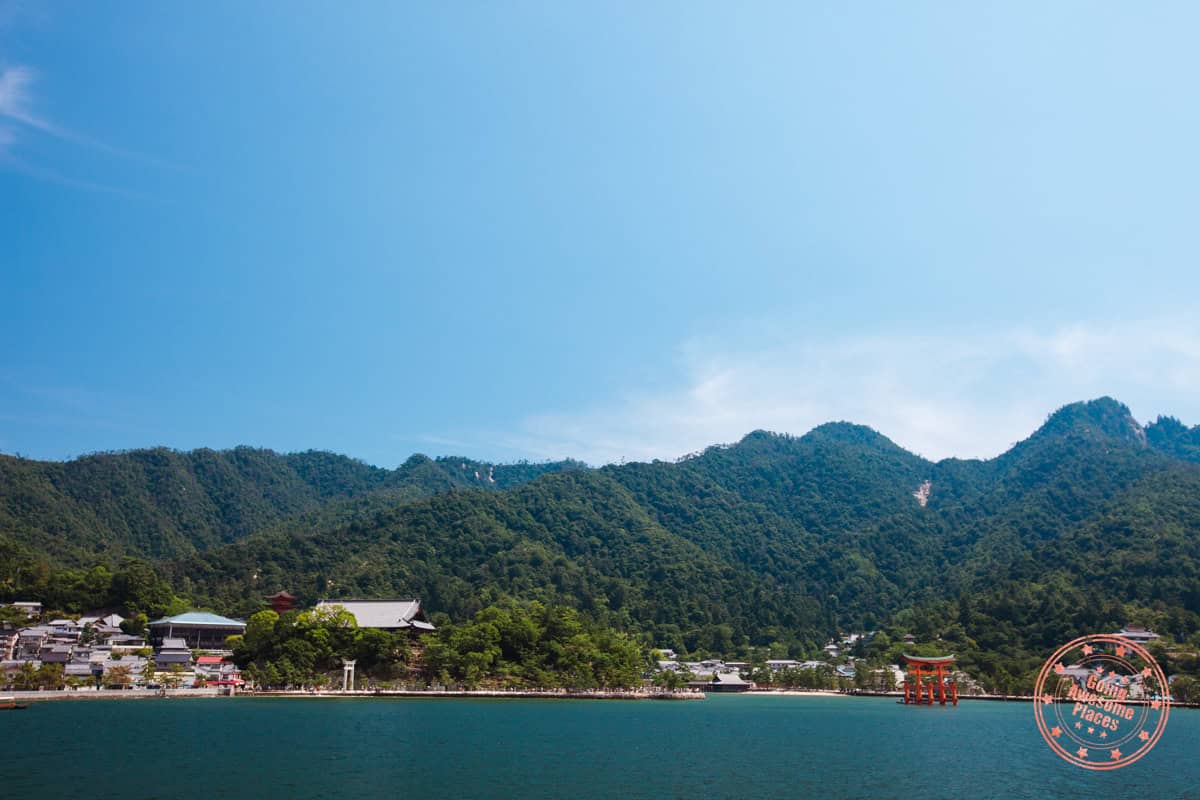
Miyajima Island is just off the shores of Hiroshima and is an absolute must-visit in the Hiroshima Prefecture. We fell head over heels for this gorgeous little island and were glad we squeezed it into our already packed itinerary.
The most important landmark on the island is the Miyajima Shrine (or Itsukumisha Shrine, depending on who you ask), which is also the island’s namesake, as Miyajima means ‘shrine island’!
It’s hard to miss the temple, which has a great big floating torii gate built in the Seto Inland Sea beside it. At low tide, you can walk out to it, but at high tide, its tall legs get submerged in water.
In the Shinto religion, Miyajima Island is considered a holy site, and its locals have worshipped Mount Misen (the biggest mountain on the island) since as far back as the 6th century.
But the island’s shrine wasn’t erected until much later in 1168 when Taira no Kiyomori, one of Japan’s most prominent figures at the time, decided he’d build his family shrine on Miyajima.
What makes the shrine so unique is that it’s a floating shrine, so it was built on tall stilts out in the sea and connected by little boardwalks. We loved the shrine so much that it even got added to our Top 5 Things To Do In Hiroshima guide.
Wondering how to reach the island? Read more about how to get there in our travel tips further down, or read the full blurb in our Ultimate 3-Day Hiroshima And Miyajima Island Itinerary.
Ride The Miyajima Ropeway For Epic Views Over The Island
 Image via Flickr by redlegsfan21
Image via Flickr by redlegsfan21The Miyajima Ropeway travels to the top of Mount Misen, the island’s highest peak. Make sure you keep an eye out for the island’s free-roaming deer on your way to the ropeway, they’re often seen wandering around the island lazily.
From the top of Mount Misen, you’ll be taken aback by the panoramic views of the Seto Inland Sea. We were lucky to visit on a sunny, clear day when there wasn’t a cloud in sight, so we had really clear views of Hiroshima city in the distance too.
We had heard that sometimes the island’s shy monkeys could be seen from the ropeway on the way up the mountain, but we didn’t see any – it’s worth keeping your eyes peeled though!
Remember to wear some sturdy trainers or decent hiking boots for your trip to Miyajima Island, as you will have to walk further up the mountain from the Shishi-iwa Observatory (where the ropeway drops you off) if you want to reach the summit.
It’s worth the extra steps though, as some of the Daishi-in Temple buildings are at the top of the mountain. The rest of the temple complex is at the base of the mountain, which is a bit confusing but pretty cool.
Look For Your Favorite Knitted Hat At Daisho-in Temple
 Image via Flickr by annas8
Image via Flickr by annas8Like we mentioned, the rest of the Daisho-in Temple is at the base of Mount Misen. It’s super cool because it was the first Buddhist temple built on the island.
To reach the main shrine there is a set of steps that are decorated with a row of spinning metal wheels inscribed with Japanese prayers. If you spin them on your way up to the shrine, you’ll receive blessings!
We loved the temple complex and thought it was super beautiful, but our favorite part of the temple was the temple garden, which is adorned with 500 miniature Rakan statues that represent Buddha’s students.
Each of the statues has a hand-knitted, colorful beanie hat on. We spent about half an hour checking out all their hats and deciding which was our favorite!
Shimane Prefecture
 Image via Flickr by Y. Hila
Image via Flickr by Y. HilaFew travelers will ever hear of Shimane Prefecture, but we think it’s well worth adding to your Chugoku itinerary.
From Japan’s prettiest garden to a historical UNESCO silver mine, two super unique attractions in the region make it worth exploring.
Adachi Museum Of Art
 Image via Flickr by Y. Hila
Image via Flickr by Y. HilaThe Adachi Museum of Art is the brainchild of Adachi Zenko, who brought his love of art and landscaping together to create this masterpiece in 1970. Bringing together nature and art, the museum is great for lovers of the outdoors as well as culture enthusiasts.
One thing that surprised us when we got there was that you can’t walk around the gardens, you can only look at them from a little outdoor area just outside the museum building. Even so, it was interesting looking at the meticulously kept landscapes, even from afar.
Beyond the gardens, some forested mountains look like an extension of the garden itself.
We’re not surprised the gardens have been ranked as the best garden in Japan every year since 2003 in the ‘Journal of Japanese Gardening’.
In the museum itself, you can browse more than 1,300 twentieth-century paintings that are swapped around seasonally. Our favorite pieces were the permanent artworks by Yokoyama Taikan.
The best thing about the gardens is that because of the species they have planted, they look different in each season, so you can keep coming back again and again and never see the same thing twice!
Iwami Ginzan Silver Mines
 Image via Flickr by kurumaebi
Image via Flickr by kurumaebiWe’d never heard of the Iwami Ginzan Silver Mines before we started researching Chugoku, and oh boy, are we glad we found it.
Built into the valleys and surrounded by forested mountains and rivers, the old silver mines are a unique part of Japanese history that not many travelers experience.
Did you know that up to a third of the World’s 16th-century silver comes from these mines? The old and abandoned mining settlements and reigning sites might seem ghostly now, but right up until the 20th century, they were among the most important silver mines in the world.
You can also explore some of the ancient transport routes that were used to ship the valuable metal in ore form from Japan to Korea and China. Three of the port towns can still be visited today, Tomogaura, Okidomari, and Yunotsu.
There are around 1,000 mine shafts, known as mabu, in the old mining area. Of course, most of them are closed and wouldn’t be very safe to visit, but there are a few exceptions.
Ryugenji Mabu Mine Shaft, which operated in 1715, is one of the ones you can still visit. Walking through the dark mining tunnels is a really cool experience worth adding to your itinerary.
Tottori Prefecture
 Image via Flickr by Y. Hila
Image via Flickr by Y. HilaAnother province that few travelers have heard of is the Tottori Prefecture, and we’re on a mission to change that.
This awesome prefecture is very coast-themed, so it’s a great destination for anyone who loves the beach or wants to go out on a boat adventure.
There are plenty of things to do, from staring in disbelief at the jaw-dropping sand sculptures in the Sand Sculpture Museum to paragliding over the mighty Tottori Sand Dunes.
We recommend setting aside at least a night to explore the area.
Sandboar And Paraglide In The Region’s Sand Dunes
 Image via Flickr by somazeon
Image via Flickr by somazeonThe Tottori Sand Dunes are famous across the country because of how tall they are. Stretching over more than 9 miles, they’re the largest in Japan and are part of the San’in Kaigan Geopark.
They’re easy to reach too because they’re only about 20-minute drive from the center of Tottori City, so we just paid for a cab there and back. You can reach them by bus if you want to save some money.
The dunes have been formed over the last 100,000 years as the Sendai River has slowly been depositing sediment from the Chugoku Mountains on the shore of the Sea of Japan. Today, they’re an adult playground.
You can ride camels along the dunes, go sandboarding down them, or even paraglide high above them!
As cute as the camels looked, we opted to go sandboarding instead. It’s surprising how giant the dunes look when you’re standing at the top of them, and our boards quickly picked up speed as we started sliding down their steep faces.
You can opt to book a private tour, which will take you to all the best spots in the Tottori Prefecture.
Sand Sculpture Museum
 Image via Flickr by Yaz Obara
Image via Flickr by Yaz ObaraOkay, we have to admit we were a little bit skeptical about how good the Sand Sculpture Museum was going to be – but the sculptures were out of this world and so much more impressive than we had imagined.
The museum is also close to the Tottori Sand Dunes, so you can easily combine them.
Each year, they change the theme of the museum, so there are always some new sculptures you can visit. When we were there, giant sculptures of ancient Egyptian landscapes and mummies that were larger than life filled the museum.
Each sculpture is handmade, and the level of detail is so impressive, and we loved that the sand is collected from the Tottori Sand Dunes.
After a year, the sculptures are broken back up and the same sand is recycled for next year’s exhibition.
Cruise Along The Uradome Coast
 Image via Flickr by ScottSimPhotography
Image via Flickr by ScottSimPhotographyThe breathtaking Uradome Coast straddles Tottori Prefecture and Iwami Prefecture. It’s beautiful and has stunning stretches of rugged coastline where sea stacks jut out of the sea.
It is part of the San’in Kaigan National Park, so is in the same area as the Tottori Sand Dunes, perfect to add to your day trip.
Along its 15-kilometer length, the Uradome Coast is blessed with white sand beaches, secluded coves, and adorable inlets.
You can kayak around the coast in a clear-bottomed kayak if you’re up to the challenge, but we were feeling pretty lazy on the day, so we decided to hop aboard one of the Uradome Coast Island Tour boats and let our captain do the hard work instead.
If you don’t want to explore the coastline from the water, you can also pick one of the hiking trails in the area. There’s one trail that runs between the ports of Ajiro and Tajiri, which has observation decks and well-maintained paths.
Soak In The Onsens At Misasa Onsen
 Image via Flickr by David Lee
Image via Flickr by David LeeA trip to Japan isn’t complete without a day soaking in the country’s amazing hot springs. It won’t be perceived as lazy either, as chilling in onsens is an integral part of Japanese culture. Plus, their mineral-rich waters are believed to have powerful healing properties, so you can say you’re doing it for your health!
The vibe in Misasa Onsen is very chill, and the hot springs here are believed to be extra powerful. Because of the high concentration of radon in the water, locals say that after bathing in the springs for just three mornings in a row you’ll notice a positive effect on your health.
Sadly, we couldn’t stay for the full treatment, but after a long afternoon soaking in the onsens, we felt like we were glowing already.
But you can do more than just bathing in the radon-rich springs. There are also springs where you can drink the hot spring water. Apparently, even just breathing it in can make you healthier.
Some of the most famous onsen ryokans in the town are Ryokan Nakaya, the large Izanro Iwasaki complex, and Misasa Onsen.
Yamaguchi Prefecture
 Image via Flickr by kurumaebi
Image via Flickr by kurumaebiWe were drawn to Yamaguchi because of the unique Motonosumi Inari Shrine and the onsens in Nagato. It was a tranquil part of our trip, and we enjoyed having a few days with a less packed schedule.
Geographically, it’s the westernmost prefecture on Honshu Island and it’s even connected to Kyushu Island by bridges!
If you’re interested in combining your trip to Chugoku with a visit to Kyushu, you should check out our Ultimate Guide for Visiting Kyushu.
POST COMING SOON!
Take Some Awesome Pictures At The Motonosumi Inari Shrine
 Image via Flickr by Alex Usov
Image via Flickr by Alex UsovThere are so many cool temples in Japan, but this one was super unique. It was built along the coast of the Sea of Japan in the north of the Yamaguchi Prefecture, and because of its rough and rugged surroundings, it stood out from other temples we had visited.
Built in 1955, the actual shrine hall is very small and not particularly memorable. What makes the Motonosumi Inari Shrine stand out is the tunnel of more than a hundred bright red torii gates that weave down the rocky cliffs from the temple.
At the top of the biggest torii gate, at the entrance to the temple is a little donation box. Legend has it that good fortune will come to anyone who manages to get a coin into the box! We gave it a few goes, but didn’t manage to get one in successfully.
The tunnel of torii gates is definitely the highlight of the shrine, and it’s also a great place to take some Instagram-worthy holiday pics.
Relax And Rejuvenate In Nagato’s Onsens
 Image via Flickr by Masataka K
Image via Flickr by Masataka KNo trip to Japan is complete without a day chilling in a hot spring. The country is covered in onsen towns, and most prefectures have at least one village you can visit if you want to go on an onsen getaway.
We always plan at least one day at an onsen when we’re in Japan, and we treat it as a day off where we can rest and recover – traveling is amazing, but it can be tiring, and onsens are the perfect antidote to travel fatigue.
The main onsen town we recommend visiting in Yamaguchi is Nagato Yumoto Onsen, which is the oldest one in the prefecture! With a history dating back 600 years, the springs here have been attracting visitors for centuries.
All the onsens in Nagato are alkaline, so they’re gentle on the skin and great for anyone who has irritated skin conditions.
The Otozure River runs through the middle of the town, and on either side of the riverbank there are rows of traditional ryokans and bathhouses. There are also lots of foot baths in the town where you can stop and soak your tired feet!
Okayama Prefecture
 Image via Flickr by Hiroshi Sato
Image via Flickr by Hiroshi SatoThe Okayama Prefecture is perfect for culture lovers and history nerds who want to dive into Japan’s past without having to go out of their way or take on arduous hikes to reach the landmarks.
For your time in the Okayama Prefecture, we recommend staying in the capital Okayama. Our favorite attractions are all in the city anyway, or just a short train ride away.
We also recommend booking this day trip which combines all of Okayama’s highlights in we go over below!
Dive Into The History Of The Okayama Castle
 Image via Flickr by mori mori
Image via Flickr by mori moriOkayama Castle, nicknamed the ‘Crow Castle’ because of its eerie and black exterior, sits along the Asahi River, which wraps around the castle complex like a natural moat.
The original castle was built in 1597, but sadly it was destroyed towards the end of World War II, like a lot of Japan’s castles.
In 1966 a new castle was built, replicating the original as closely as possible. One building that managed to escape the war and dates back to 1620, the Tsukimi Yagura which translates to ‘moon viewing turret’.
As you walk around the castle, you’ll spot a few places where they’ve left the foundations of the original castle complex exposed to give visitors an idea of what it was like before the war.
It’s a pretty mighty castle too, with six floors! We weren’t in a hurry, so we spent a while browsing all the historical artifacts and reading up on the castle’s historyl.
Our favorite part was visiting the pottery studio inside the castle. You can also book a class and try out the local Bizen-yaki pottery style!
Stroll Around The Korakuen Landscape Garden
 Image via Flickr by SteFou!
Image via Flickr by SteFou!Just across the Asahi River from the Okayama Castle you’ll find the Okayama Korakuen landscape garden.
It’s considered one of the three great gardens of Japan! The gardens have a pretty long history and were started some 300 years ago by the Ikeda family, who ruled the city at that time.
The gardens are big, so we spent a slow morning wandering around. There are plenty of little paths that weave through the carp ponds, over little wooden bridges, and past waterfalls.
It is also worth stopping at some of the tea houses along the way and taking a break with a cup of matcha tea in hand. There’s also a tea plantation in the garden, which is rare to see in the center of a city.
Step Back In Time In The Kurashiki Bikan Historical Quarter

The Kurashiki Bikan Historical Quarter is in the little city of Kurashiki, not far from Okayama. It was once the commercial and political hub of the city. Many of the original buildings have survived until today and it has become a favorite spot amongst history buffs and culture enthusiasts.
Old storehouses from the Edo Period have been converted into cute stores, cozy cafes, and museums that you can dip in and out of as you explore the neighborhood. There are also some cool modern buildings in Bikan, which stand out against the older houses and make the area more interesting.
The area is where Japanese denim was born, so you can stock up on Kojima denim clothes at the local clothes shops.
There is a charming network of canals through the neighborhood, so we decided to do something romantic and go on a boat ride along the willow-tree-lined canals. It was nice getting to see the area from the water, especially since we didn’t have to do any of the rowing ourselves!
If you’re a trendy traveler who likes to go home with as many epic pics as possible, you should also look into renting a kimono that you can wear as you walk around the area. It’s always fun getting to dress up and pose for the camera.
Activities We Recommend You Book In Advance

Here are our top recommended activities and experiences to enjoy across Chugoku:
- Get your admission ticket to the Orizuru Tower observation deck and multimedia floor ahead of time here! That way, you can save yourself time waiting if there are any queues and avoid coming up against any language barriers.
- If you want to dive into the history of the atomic bomb and find out more about Hiroshima, book this 4-hour-long tour of the city with a licensed tour guide. You’ll visit the Hiroshima Peace Memorial Park as well as the Hiroshima Castle. We thought the tour was really informative, and we learned a lot more than we would have if we’d just gone by ourselves. Our guide was super friendly too!
- History nerds will love this guided tour of Hiroshima Castle, where you’ll learn loads about what life was like back in the Edo Period. You’ll also be able to dive into the castle’s fascinating history through the photos and artifacts on display. Our guide was full of wisdom and was always happy to reply to our questions.
- Short on time and trying to cram Hiroshima and Miyajima into a day? Don’t panic, we’ve got the perfect tour for you. Book this Hiroshima and Miyajima tour that squeezes all of the area’s most important attractions into a day trip! It’s amazing how much time you can save when you leave all the logistics and practical stuff to someone else.
- The Uradome Coast and Tottori Sand Dunes are out of this world, and very few travelers have even heard about them. Get off the beaten track on this private tour, which will take you to all the best spots in the Tottori Prefecture, including a few secret spots we haven’t added to this guide! It’s on the expensive side, but seeing as up to 6 of you can join the tour and split the cost it’s great value for money. If you’re traveling on a budget and this is way out of your price range or you’re a solo traveler, then don’t worry. You can book this more affordable tour of the area instead.
- Combine all of Okayama’s highlights in this epic day trip tour. You’ll get to visit the Okayama Castle, explore the Kurashiki Bikan neighborhood with a knowledgeable guide, and explore the gorgeous Korakuen Garden. If you’re tight on time or you’d rather not have the stress of planning how to get from one attraction to the next, this tour is the solution to all your problems!
Go Deeper In Chugoku

- Our 12-Day Shikoku Itinerary – Ultimate Road Trip Guide To Traveling Japan’s Hidden Gem is perfect if you want to combine a trip to Chugoku with a trip to another region of Japan. From the Iya Valley to the Nakatsu Gorge, there are loads of epic natural wonders waiting to be discovered on Japan’s smallest main island – so why not book a bit more holiday leave and extend your trip?
- Check out our Ultimate 3-Day Hiroshima and Miyajima Island Itinerary, where you can dive deeper into the coolest things to do in Chugoku’s biggest city and cutest island. We’ve included everything you need to know for a great 3-day trip, including the opening times and tips for each destination. You can also browse our recommendations on where to eat and which hotels to book.
- Are you already in Hiroshima and you just need a quick cheat sheet of all the best things to do in the city? Then have a quick look through our Top 5 Things To Do In Hiroshima guide. Whether you’re there for a day or a week, these are the attractions that you should put at the top of your sightseeing list.
- Wondering where to stay on your trip to Chugoku? Don’t panic, we’ve got your back. Our Where To Stay In Hiroshima – A Guide To The Best Hotels And Neighborhoods article is packed with hotels that are suited to every budget. Whether you’re on a honeymoon getaway or traveling with the last of your gap year savings, there’s a hotel for you. It also includes a closer look at the city’s coolest neighborhoods, to help you figure out which one matches your vibe the best.
- If you’re planning a longer trip and wondering how to fit Chugoku in, then we’ve got the perfect read for you. Our 12-Day Japan Itinerary – The Ultimate Trip Planning Guide is a perfect example of how to tie all of Japan’s best regions together. You can follow the itinerary day by day or pick and choose your favorite parts, it’s up to you!
- Find out everything you need to know about the Sakura season ahead of your trip in our Ultimate Guide To Cherry Blossoms In Japan! From tips on how to predict when the cherry trees will blossom to the symbolic significance of these gorgeous trees, there’s loads in there to get you inspired.
- Want to try ordering like a local on your next trip to Japan? Then check out our awesome Rosetta Stone Japanese guide, where we uncover whether the Rosetta Stone App is any good for learning Japanese. Spoiler alert – it is!
- Whether you’re a newbie backpacker or an old timer, our The Art Of Trip Planning guide is a must-read.
- Don’t go to Japan before you’ve checked out our The Best Apps For Japan Travel guide. It’s full of handy apps that will help you overcome language barriers and save you from getting lost.
- Hoping to extend your Chugoku trip to Shikoku? Then you have to read our 12-Day Shikoku Itinerary – The Ultimate Road Trip Guide To Traveling Japan’s Hidden Gem. We were blown away by Shikoku and can’t believe more people don’t travel here, it’s a hush-hush destination you’ll fall in love with.
General Travel Tips

Once you’ve decided you want to go to Chugoku, there are all the practical things to consider. Don’t let the logistics bog you down and save yourself time doing research by reading our general travel tips below.
When is the best time to go to Chugoku:
The best time to go to Chugoku is in Spring or Autumn. They’re the prettiest seasons, and the weather is also pretty good. If you go in Sprin,g you’ll get to catch the Sakura season, when all the cherry blossom trees come into full bloom and city parks come to life in a sea of pink petals.
It’s also a great time to go sightseeing in cities like Hiroshima and Okayama, and a nice time to get outdoors to places like Shukkeien Garden and Okayama Korakuen landscape garden, as the weather is sunny but not too hot.
Ironically, summer is the worst time to come to Chugoku. Known as Tsuyu, it’s the rainiest season in Chugoku. It can be super humid and muggy, so we don’t recommend it. On the other hand, winter can be pretty chilly in Chugoku, so you might end up missing out on doing stuff!
What you shouldn’t miss in Chugoku:
If you’re short on time and budget, then prioritize seeing Hiroshima and Miyajima Island. They are the area travelers tend to visit, but because they’re so close together and there’s so much to do, it’s a great choice for anyone short on time.
Beyond that, put going sandboarding down the Tottori Sand Dunes, spending a weekend chilling in the hot spring at Misasa Onsen, and exploring the Kurashiki Bikan Historical Quarter at the top of your Chugoku bucket list.
Top tips for traveling in Chugoku:
- Remember to cover up your tattoos at Japanese onsens – The rules on tattoos in Japan are very different then what you’ll be used to, and they’re pretty strict. Most onsens won’t let you in if you have large, visible tattoos on show. But luckily for you, there is a simple solution. The Suhada Seal is a sticky, skin-colored patch that you can stick directly over your tattoos to cover them up. If you’re going to visit a few different onsen towns and bathhouses, make sure you bring some spares! It’d suck to run out and have to miss out.
- If you’re looking for Miyajima Island on Google Maps, remember to use its formal name – Whilst everyone knows the island as Miyajima, it’s actually called Itsukushima Island. So if you’re having trouble finding it on your navigation app or Sat Nav, that’s probably why!
- Got a spare night on your itinerary? Then stay on Miyajima Island – There are a few reasons it’s worth spending a night on Miyajima Island if you have the time. The main one is that the Miyajima Shrine and the floating torii gate are lit up at night. It looks like a magical floating village once the sun has gone down, and it is even more special than during the day. You can even hop on a little boat and sail around the shrine and torii gate. There’s enough to do on Miyajima Island to fill two days, so if you’ve got the time, why not explore at a relaxed pace and really enjoy the island?
- Take the Express Ferry from the Peace Memorial Park to Miyajima – There are a few ways you can get to Miyajima Island, but the easiest and fastest is to take the Express Ferry from the Peace Memorial Park. It’s more direct than other routes and leaves from an area you’re likely to be exploring anyway, so it’s a win-win! If you want to find out more about the journey, which takes about 40 minutes, or read about the other route options, then check out our Ultimate 3-Day Hiroshima And Miyajima Island Itinerary.
How to get around Chugoku:
Generally, there aren’t loads of flights from abroad that go directly to Chugoku, so you’ll likely end up arriving in Tokyo and then getting a domestic flight with a company like JAL and ANA from there to Hiroshima.
Another option is to take the Shinkansen bullet train from Tokyo to Hiroshima. If you decide to do that, it’s worth getting a JR Pass to save yourself some money, you can use it for the rest of your trip for more local trains.
Once you’ve arrived in the region, you can use bus companies like West Japan JR Bus to get between the region’s major cities and more rural towns that you can’t reach by train.
Of course, the most comfortable way to travel between Chugoku’s five prefectures is with your own car. It is worth considering a rental car for your trip, as it can save you loads of time planning, and it means you can do everything in your own time.
When we’re navigating in Japan, whether we’re on a road trip in a hire car or walking from A to B in a city, we use Google Maps. It’s super reliable and has loads of up-to-date information about public transport schedules, walking times, and traffic.
Common travel mistakes:
- Don’t underestimate the Chugoku region – Chugoku gets overshadowed by more popular regions, like Kansai and Hokkaido so people assume that there isn’t much to see. Because of that, travelers will either skip it entirely or only set aside a few days to explore the region. But seriously, there’s more to Chugoku than just Hiroshima! Set aside up to a week to explore the less well-known prefectures, and you’ll uncover secret spots that other tourists won’t even know exist.
- Make sure you go sandboarding on the Tottori Sand Dunes, no matter your age – We noticed that many older travelers were skipping the sandboarding at the Tottori Sand Dunes, and parents were waiting around and watching their kids do it without giving it a go. But trust us, it’s so much fun! And you don’t need to be super fit to do it, so it’s super accessible no matter your fitness level.
- Book at least one tour – It’s tempting not to book tours when you’re on holiday to save yourself money. But Japan has a super unique culture that’s very different from the West, and there are lots of things you’d miss without a tour guide. If you can’t afford to book loads of tours, pick at least one from our list!
- Learn a bit of Japanese before you visit Chugoku – Because the Chugoku region is less touristy, especially once you get beyond Hiroshima and Miyajima Island, fewer people speak English in the area. Even a few words and some basics can go a long way in Japan. If you’re not sure where to start, check out our Rosetta Stone Japanese guide and find out how we started learning Japanese.
Packing Guide
You’ll be glad to know that you won’t need any specialist gear or expensive kit for your trip to Chugoku. Apart from the obvious stuff, here’s what you should bring along:
- Comfortable shoes: Your step count will quickly add up on this trip, especially when you’re visiting all the nuclear bomb memorial sites in Hiroshima. Save your feet from blisters and pack your comfiest trainers or even some lightweight hiking boots.
- If you’re visiting in the summer, you might want to consider bringing some hiking sandals, so you don’t get too hot. We love Tevas and Keens most of all.
- Bring a lightweight raincoat: We recommend bringing a pack away raincoat that you can chuck into your daypack, especially if you’re visiting in the autumn, as October is the rainiest month of the year in Japan.
- Bring hand sanitizer: It’s not unusual for there to be no soap in public and restaurant toilets in Japan.
- Don’t forget your best camera so you can capture all the awesome destinations you travel to! You might want to think about packing other accessories like selfie sticks and camera hood lenses too.
- Remember to pack a travel adapter: You’ll need a two-pronged Type A for Japan, so check your plugs to see if you need to get an adapter ahead of your trip.
- Order some tattoo cover-up patches ahead of your trip. You might not be allowed into Japanese onsens if your tattoos are on show. Suhada Seal’s are pretty good.
- Bring along a fast-drying microfiber towel: There’s nothing worse than having a soaking wet towel getting smelly in your bag, so we recommend these for beach and hot spring trips.
- Get some Japanese Yen ready before your trip. It’s always a good idea to pack some cash in the local currency before your trip, in case you need cash to pay for your transport from the airport or you find yourself in a sticky situation.
- Check ahead of time that you can use your bank card to take out Japanese Yen whilst you’re abroad without being charged hefty fees! If not, plan ahead and bring all the travel money you think you’ll need. In our 10-Day Japan Itinerary we estimated it costs about $147 per person per day to travel in Japan.
- Check if you need a Visa ahead of your trip! Most countries don’t need a Visa for a short holiday in Japan, but make sure you check the unique requirements for your country so you don’t run into any unexpected problems. You can find out more on the Ministry of Foreign Affairs of Japan website.
From Sand Dunes To Onsens, Chugoku Is An Adventure Waiting To Happen
We hope this ultimate guide for traveling in Chugoku has got you feeling excited and ready for a trip to this awesome region of Japan. While most travelers only visit Hiroshima and Miyajima Island, we think there’s loads to see beyond the capital.
Make sure you don’t miss destinations like the Tottori Sand Dunes and Kurashiki Bikan Historical Quarter!
The best time of year to go is in spring when the cherry blossom is in full bloom. So, start looking at flights ahead of time and get ready to discover destinations few travelers venture to and create memories that will last a lifetime.
Frequently Asked Questions
What is the largest city in Chugoku?
It probably won’t come as much of a shock that Chugoku’s biggest city is Hiroshima. It’s also the capital of the Hiroshima Prefecture and the region’s industrial hub. Lots of people have started moving to the city from the region’s more rural towns, so it’s always getting bigger.
The population sits at about 1.1 million people, and it’s a pretty big city even though a lot of the best sightseeing attractions are in a walkable area (which is great news for you!).
What food is Chugoku known for?
Hiroshima is oyster-crazy. The city is Japan’s biggest oyster producer, and you can eat them at restaurants throughout the city. Whatever way you can think of cooking them, they’ve done it! They serve them raw, steamed and grilled. One of the most peculiar flavors we came across was whisky oysters.
Another Chugoku classic is okonomiyaki. They’re a type of savory pancake that is made from batter mixed with soba noodles, shredded cabbage, and toppings of your choice. Adding noodles to the mix is unique to Chugoku, so even though you can find this hearty dish in other regions of Japan they won’t taste the same and the way they are made is slightly different.
How much does a trip to Chugoku cost?
One thing that’s great about Chugoku is that it’s not on the usual tourist trail. That means that hotel prices tend to be cheaper than in destinations like Kyoto and Tokyo. You can also keep your costs down by visiting outside of the peak season and sticking to budget-friendly restaurants (eating whisky oysters everyday will add up!).
It’s hard to say how much you will spend exactly, but to give you a rough idea, in our 10 Day Japan Itinerary For First Timers, when we priced out our trip to Japan it averaged $147 per person, per day. We found that our biggest cost. You could definitely eat cheaper, especially if you got an apartment and cooked your own meals some days.
What is the dialect of the Chugoku region?
Learning Japanese is already a challenge, but when you factor in the fact that there are different dialects across the country that can change how you pronounce quite a lot, it starts to feel like mission impossible!
In Chugoku, they speak a pretty standard type of Western dialect. That means that vowels that come right after each other tend to be merged into one sound and there are some unique endings they use to form verbs that you won’t hear anywhere else.
But don’t panic, locals will be super happy to hear you trying to speak Japanese even if you don’t get it perfect. Keep trying!
Japan Trip Planning Essentials And Discounts
If you’re in the middle of booking your trip to Japan, here are the most important places you need to go to book:
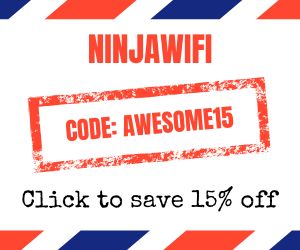
- JR Pass – The two most reliable places we always check are JRailPass and JRPass. If you are taking long distance Shinkansen across multiple region, get the full JR Pass. If you’re focusing on one specific area, you only need a JR regional pass. The official booking platform is Smart-Ex.
- Shinkansen – The JR Pass prices have gone up and for many of you, it’ll make more sense to book tickets individually. The secret is that when you buy your Shinkansen tickets through Klook offers special vouchers for Don Quijote and BIC when booking. Their tickets are super easy to redeem as well. Right now, use code SKS10OFF to save $10 USD off.
- Hotels/Ryokans – In Japan, the best website for accommodations, hands down is Agoda. When we’ve compared them against Booking, Agoda consistently came out cheaper.
- Tours – While Viator and GetYourGuide are our go-to’s, Klook and KKDay are much popular in Asia so it’s always worth comparing across all of them to make sure you get the best price. With Klook, use code GOINGAWESOMEPLACES to save up to 10% on your first booking.
- Pocket Wifi – While we do love eSIMs, having a pocket wifi is great for sharing data with a large group. The most popular is NinjaWifi which is easy to pick up at the airport. Use code AWESOME15 to save 15% (automatically applied). Alternatives are offered by JRPass and JRailPass but they aren’t as cheap. For a more global solution, consider Solis and PokeFi.
- eSIM – The best one is Airalo. Save money by getting the Japan region eSIM and use referral code WILLIA9500 to get $3 USD credit on your first purchase. From now to Feb 29, the 10GB package is half price as well! Ubigi is another one that we’ve had success with where they uniquely offer 5G coverage. Use code AWESOME10 to save 10% on your first order.
- Car Rental – Big companies like Budget, Avis, and Enterprise operate in Japan but they’re usually the most expensive. The best companies are the local Japanese ones such as Toyota Rentacar, Nippon Rentacar, Orix Rentacar, Nissan Rentacar, and Times Car Rental. To make things easier, use Rentalcars and Klook to compare prices all in one place. Don’t forget, you need an IDP to drive in Japan so get one before you leave your home country.
- Learn Japanese – It helps to know even a bit of the language before you go. Start your learning with Rosetta Stone Japanese.
- Cash or credit – Cash is still very important to have in Japan but when you use credit cards, make sure you’re not getting charged those extra exchange rate fees. The best card right now is the Wise Multi-Currency Card which is actually a debit card where you can convert at favorable rates beforehand. This cuts out any sneaky transaction fees.
- Travel Insurance – Make sure you’re covered in case something happens. Get quotes from HeyMondo where booking through our link gets you 5% off automatically and if you’re from Canada, get quotes from RATESDOTCA.
- Shopping – Discovering Don Quijote is a quintessential part of the Japan experience. The secret for tax-free shopping is that they have a coupon that can help you save 10% off + additional 5% off if you spend ¥10,000 or more.

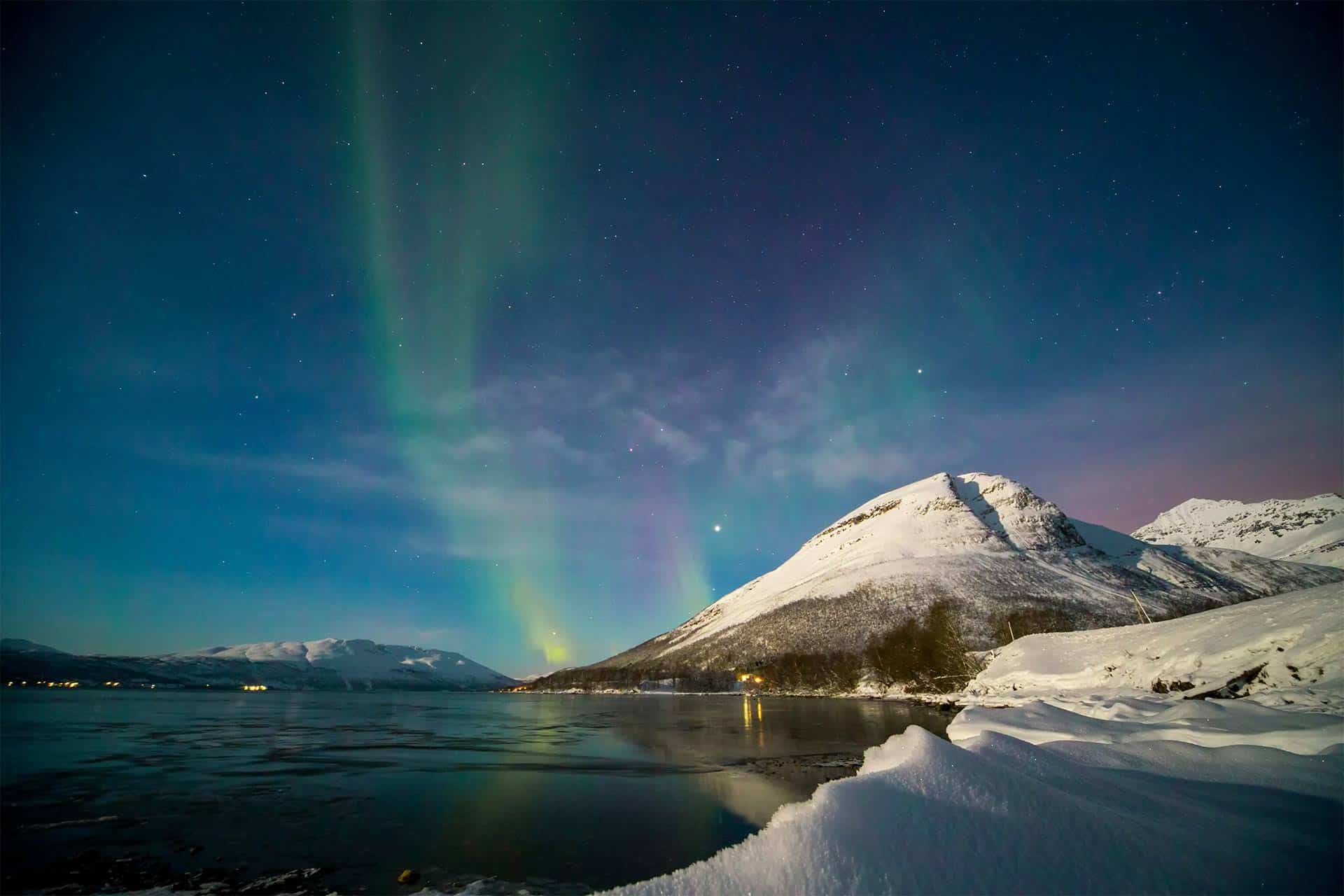
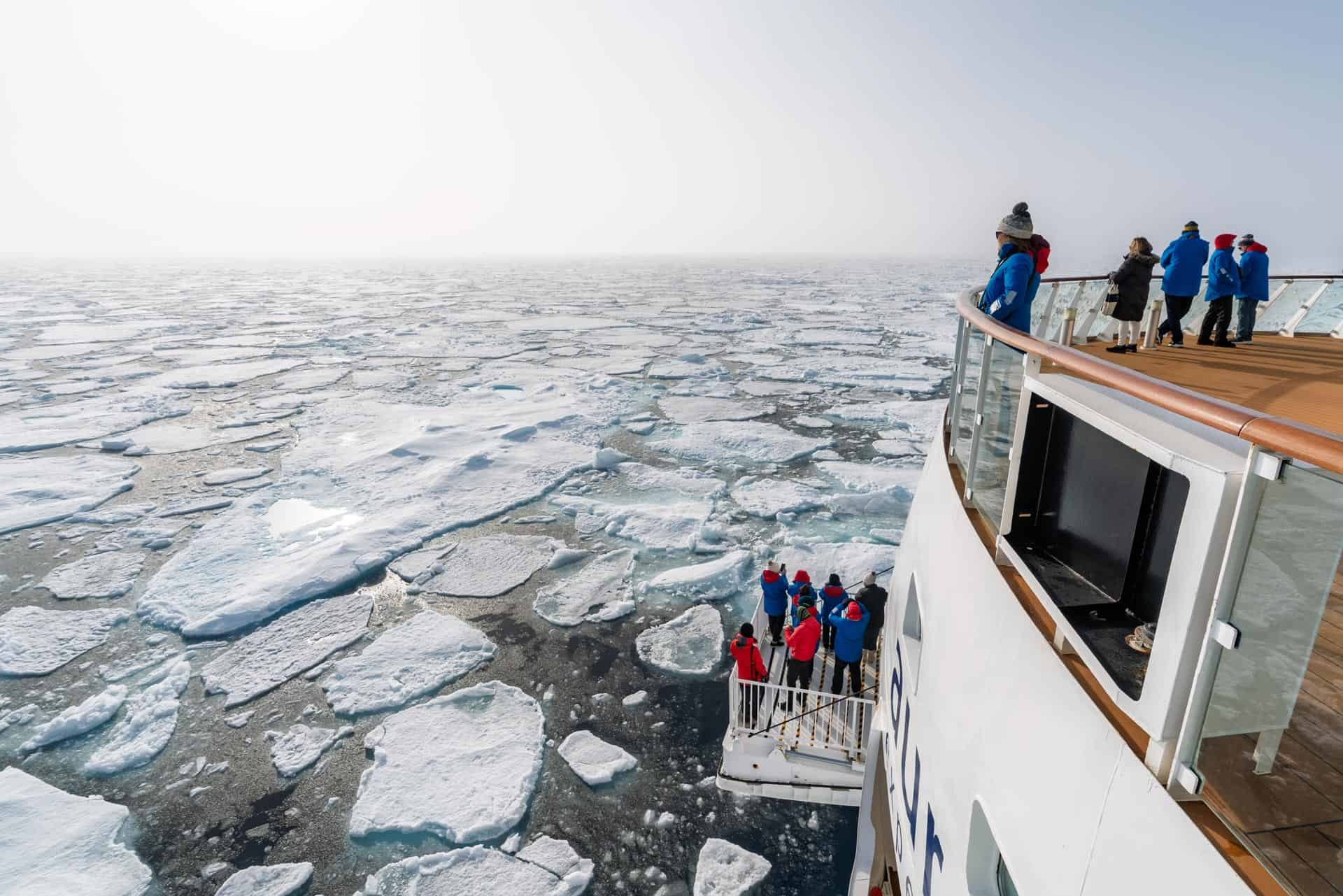
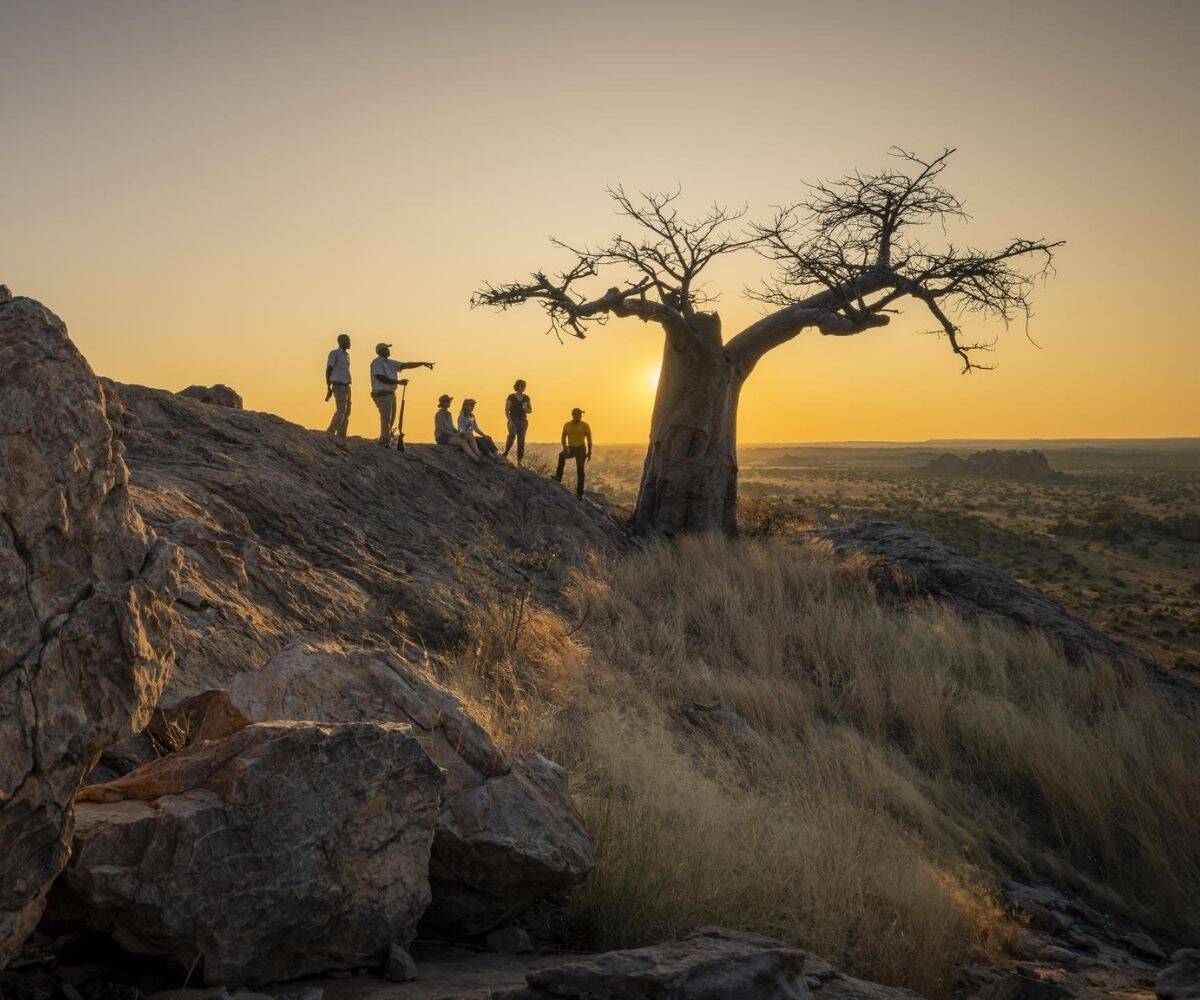






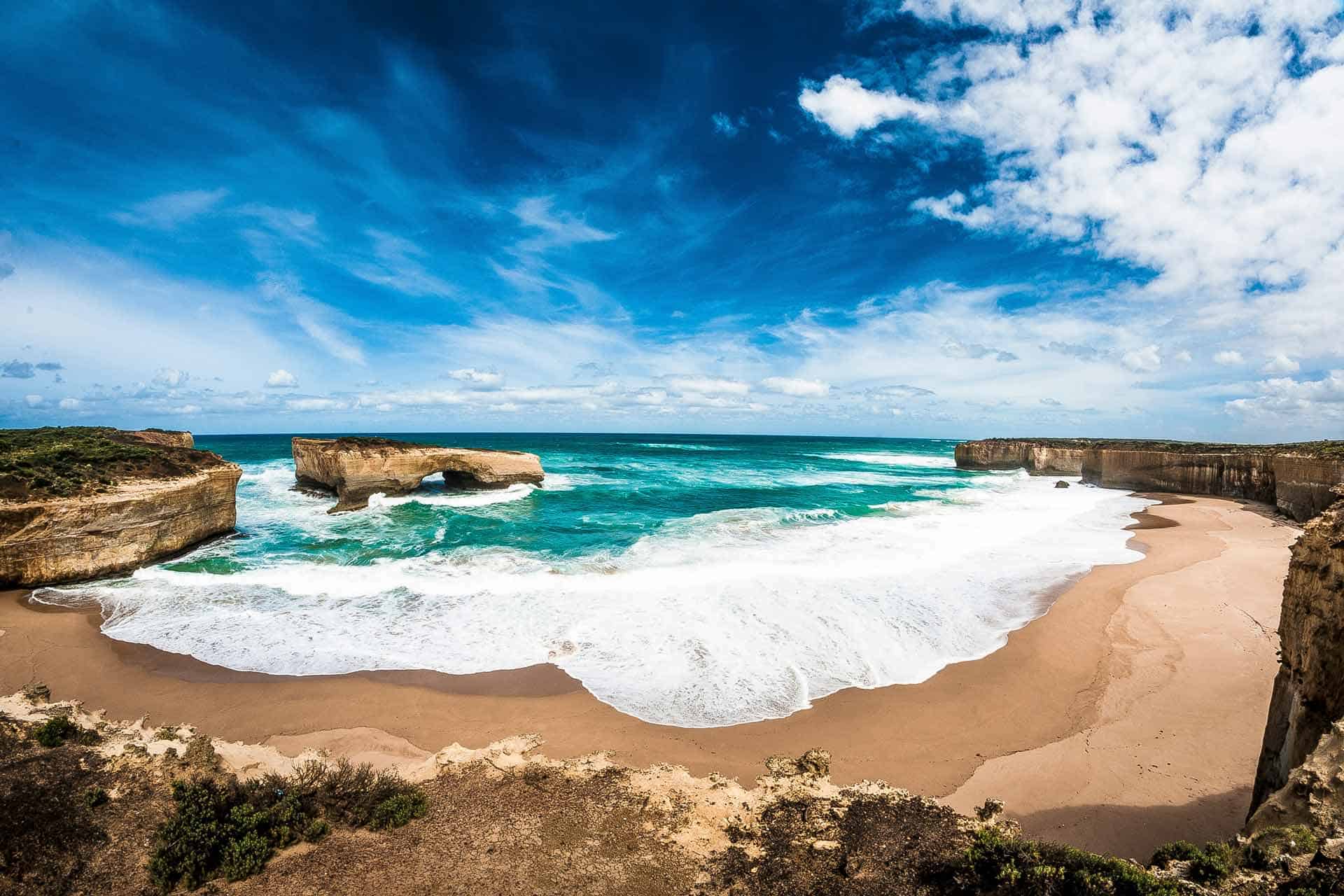
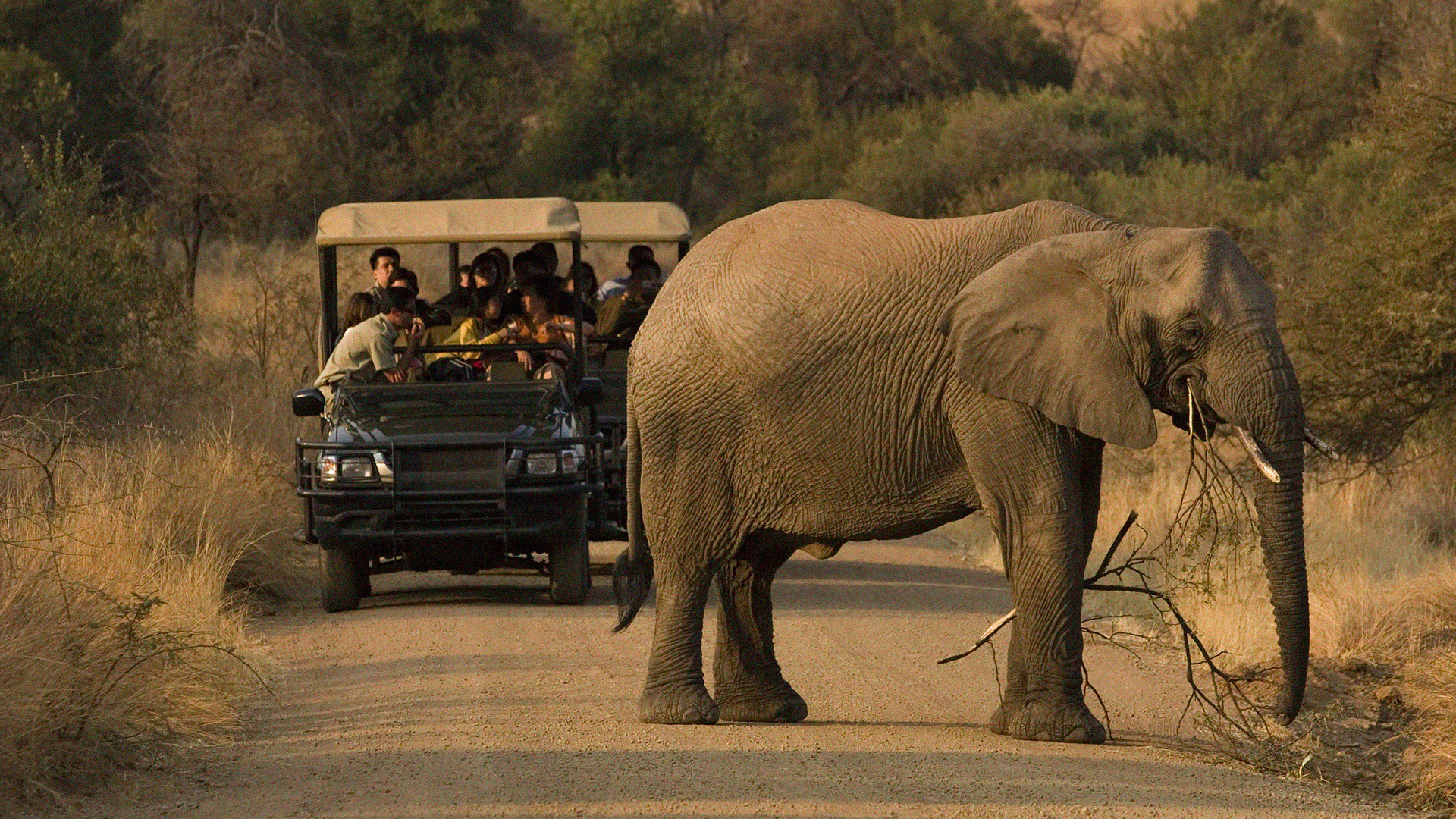







 English (US) ·
English (US) ·